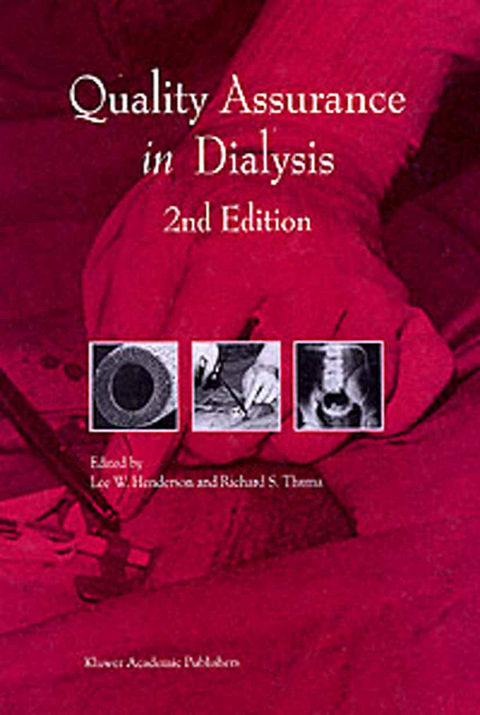
Quality Assurance in Dialysis
Springer (Verlag)
978-0-7923-5281-5 (ISBN)
Evidence-based medicine as a strategy for improving the quality of clinical decision making for dialysis patients.- A continuous quality improvement paradigm for health care networks.- Process for initiating and maintaining continuous quality improvement in the ESRD setting.- Choice of statistical models for assessing the clinical outcomes of the efforts to provide high quality care for the ESRD patient.- Assigning severity indices to outcomes.- The role of quality assurance in preventing legal actions.- Quality Criteria for the Clinical Record.- The impact of global vigilance reporting requirements on the quality of dialysis products and services.- Regulatory environment and government impact on the quality of dialysis products.- Global spectrum of quality assurance in the provision of dialysis.- Clinical Quality of the Patient at Onset of Dialysis Treatment.- Patient and Therapy Perspectives: Choosing the Patient “Is better Worse?”.- Quality of care in the pre-ESRD period; impact on survival in the first year of dialysis.- Quality of life assurance in hemodialysis.- Hemodialysis in the home and its impact on quality of life.- Selection of adequacy criteria models for hemodialysis.- Water treatment for hemodialysis.- Reuse of dialyzers — implications for adequacy of dialysis.- The impact of membrane selection on quality assurance in dialysis.- Selection of transport parameters in judging membrane performance.- Quality in peritoneal dialysis: achieving improving outcomes.- The critical role of prescription management in a peritoneal dialysis program.- Criteria for biocompatibility testing of peritoneal dialysis solutions.- The Impact of Sterilization Methods on the Quality of Peritoneal Dialysis Solutions.- Quality assurance in the treatment of acute renalfailure.- Quality assurance in renal transplantation.
| Erscheint lt. Verlag | 28.2.1999 |
|---|---|
| Reihe/Serie | Developments in Nephrology ; 39 |
| Zusatzinfo | X, 300 p. |
| Verlagsort | Dordrecht |
| Sprache | englisch |
| Maße | 210 x 279 mm |
| Themenwelt | Medizinische Fachgebiete ► Innere Medizin ► Nephrologie |
| Medizin / Pharmazie ► Medizinische Fachgebiete ► Urologie | |
| ISBN-10 | 0-7923-5281-5 / 0792352815 |
| ISBN-13 | 978-0-7923-5281-5 / 9780792352815 |
| Zustand | Neuware |
| Haben Sie eine Frage zum Produkt? |
aus dem Bereich


